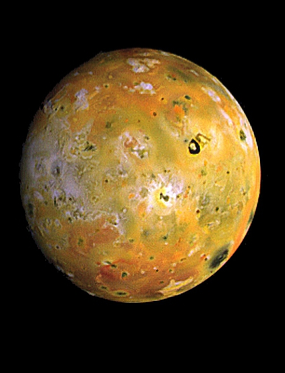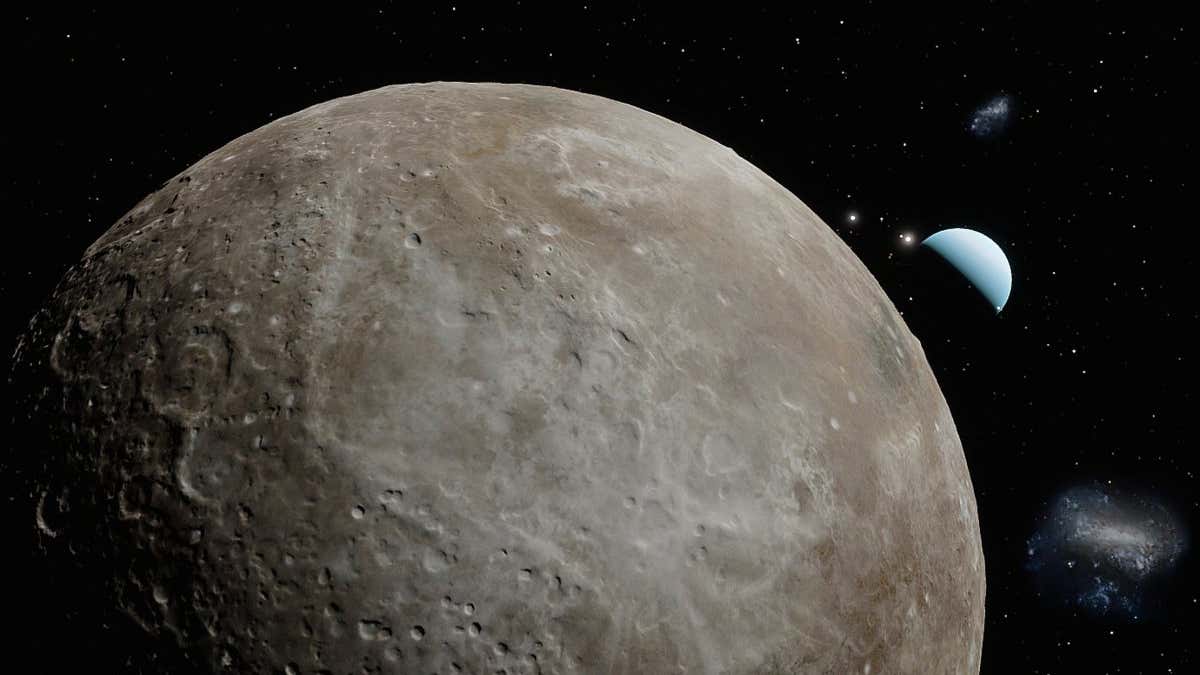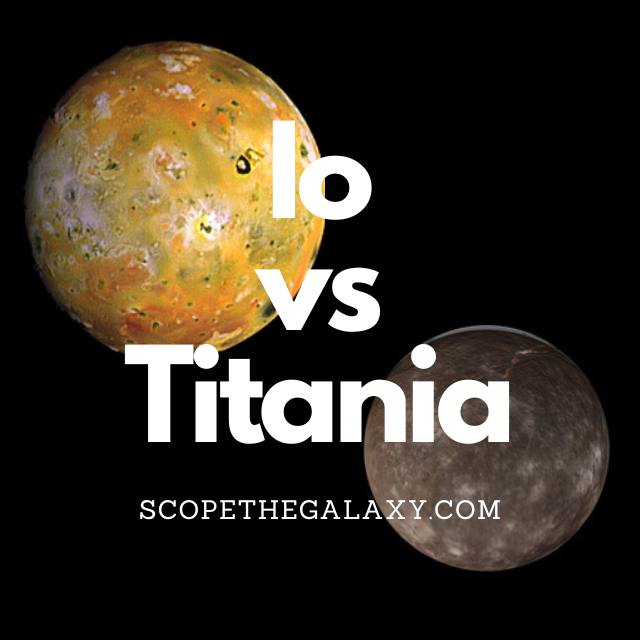*This post may contain affiliate links. This means we may make a commission if you purchase an item using one of our links*
The main differences between Io and Titania are that Io is the bigger of the two with a diameter of 3,643km while Titania’s diameter is 1576.8km, Io is the most volcanically active entity in our solar system whereas Titania is not volcanically active and Io orbits Jupiter while Titania orbits Uranus.
For a more detailed look at both natural satellite along with their similarities and differences, continue reading as it will be covered more thoroughly below.
What Is The Moon Io?
Table of Contents

The Moon Io – also known as Jupiter I – is the third largest of the Galilean moons, which has the closest orbit to Jupiter. It is the fourth-largest moon in our solar system by size – with a diameter of 3,643km – but has the highest density of all moons in the Milky Way.
In addition, Io has the strongest surface gravity of all moons and the least water by atomic ratio compared to any other astronomical object in our solar system.
Perhaps the most interesting feature of this lunar body is the 400 active volcanoes on its surface, which make it the most volcanically active object in the Milky Way; some of these volcanoes can exude plumes of sulfur to a height of several hundred miles.
The reason for this intense activity is the tidal heating caused by friction in the moon’s interior. Thanks to Io’s proximity to Jupiter, it finds itself caught between the gravity of its planet plus the two nearby moons – Ganymede and Europa. And this creates extreme tidal forces.
A side effect of these tidal forces is heat, which keeps most of Io’s crust in liquid form. Because of this, the surface of Io experiences a constant state of renewal; sites once home to large craters are slowly filled with molten lava and liquid rock.
While the complete makeup of Io’s surface is not yet defined, theories suggest that its main component could be sulfur and sulfur compounds because of the varied coloring. Silicate rock could also be a likely component as it would account for the high temperatures.
Io orbits Jupiter from a distance of around 422,000km, with an orbit that takes 42.5 hours to complete. Sitting 778,000,000km from the Sun, the surface temperature of this planet sits around -130 degrees Celsius. But due to the intense volcanic activity, the lava flows can reach temperatures of 1649 degrees Celsius, which is far hotter than anything on Earth.
What Is The Moon Titania?

Titania is the biggest of Uranus’s moons, with a circumference of 4,956km and a diameter of 1576.8km.
The high density of this moon suggests that it most likely formed from a collection of dust and debris leftover from the formation of Uranus or from the debris created in the collision that reportedly tilted Uranus onto its side. As a result Titania has a mass of 3.4 × 10^21 kg.
First discovered on 11th January 1787 (the same day as the discovery of Oberon, the second biggest moon of Uranus) by British astronomer William Herschel, the name “Titania” comes from the Shakespeare play, A Midsummer Night’s Dream. (Most of Uranus’ moons are named after Shakespeare’s characters.)
Having observed Titania for many years, scientists theorize that its composition is likely to be equal parts ice and rock, the latter of which may contain carbonaceous materials and organic compounds.
Research suggests that the moon most likely has a rocky core (accounting for 66% of the moon’s radius) and an icy mantle. If the mantle contains ammonia, it will act as antifreeze and make it possible for liquid water to exist. In this instance, the moon could possess a layer of liquid ocean around 50km thick.
Titania tilts slightly towards the equator of Uranus and is tidally locked to its planet. This means a Titania day is 8 days and 17 hours which would be the same for its orbital cycle. Titania has an average temperature of -203 degrees Celsius.
The planet Uranus is also tilted, with the moons orbiting on the equatorial plane, giving it extreme seasons. On Titania, the north and south poles experience 42 years of complete sunshine followed by 42 years of total darkness.
Scientists have observed the presence of large amounts of carbon dioxide, suggesting this may be the primary component of this moon’s atmosphere. Thanks to the tilted orbit, and a concentration of solar radiation from the poles, Titania probably maintains a carbon dioxide cycle, similar to the hydrogen cycle on Earth.
Similarities Between Io and Titania
As both are natural satellites, Io and Titania do share a few similarities, which includes the following:
- Both have a hotter central core.
- Both have a rocky, terrestrial surface.
- Both are spherical in shape.
- Neither have rings surrounding them.
- Both are tidally locked to their planet.
- Both orbit their planet in an elliptical pattern.
- Neither have a magnetic field.
- Neither have tectonic plates
Differences Between Io And Titania
As for their differences, they include the below:
- Io is bigger with a diameter of 3,643km whilst Titania has a diameter of 1576.8km.
- Titania orbits Uranus whilst Io orbits Jupiter .
- Titania has a very thin exosphere composed mostly of carbon dioxide whilst Io’s is composed mostly of a thin sulfur dioxide layer.
- A day on Titania takes 8 days 17 hours whilst a Io day is 42 hours.
- It takes Titania 8 days 17 hours to orbit Uranus whilst Io orbits Jupiter in around 153 hours.
- Io orbits Jupiter at an average distance of 422,000km whilst Titania is 435,840km from Uranus.
- Titania’s average temperature is around -203 degrees Celsius whilst Io’s average temperature is -130 degrees Celsius.
- Io’s density is 3.53 g/cm³ whilst Titania’s density is 1.71 g/cm³.
- Io’s mass is 1.345×10^23 kg whilst Titania’s mass is 3.4 × 10^21 kg.
- Titania’s gravitational strength is 0.367 m/s² whilst Io’s is 1.796 m/s².
- Io is the most volcanically active entity in our solar system while Titania is not volcanically active.
- Titania may have a water under its surface.
Summary
Io and Titania may both be moons, are one of many natural satellites that orbit their respective gas giant planets and are also tidally locked to their planets but, they differ in numerous ways too.
Whether it be in regards to mass, size, their volcanic activity, gravitational strength, how dense each body is and more. Therefore, despite the fact both are spherical and rock based celestial bodies, they have many distinct features that easily distinguish the two from one another.

